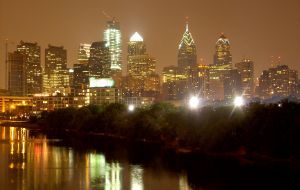Dark-sky compliance is gaining in popularity. The main reason, you may ask?
Dr. Bulb here with the answer: environmental concerns. There is new research suggesting that outdoor light fixtures may be negatively impacting the mating and migration of various species of animals; and many believe the solution to this problem is dark sky compliance.
Dark sky compliance began gaining popularity in New Mexico when light pollution began affecting people’s ability to observe the stars, a huge industry in the state. Astronomers and observatories were affected by light pollution from street lights, sports fields, etc, where some of the light from the fixtures went up as well as where it was truly needed.

Dark sky compliance has since been adopted in many other areas. Recent research has suggested that light pollution may affect more than just our ability to observe the skies; it may be negatively affecting the life, migration, and mating of various species of animals. These new studies are contributing to the popularity of dark sky compliant luminaires.
To quote an article discussing this issue, “unlike the developer’s bulldozer, light pollution destroys natural habitats insidiously.” This moral dilemma is nothing new. The fact that luminaires are the culprit, however, is. There are many ways that light pollution affects wildlife.
For some, like the firefly, mayfly and some species of birds, light pollution may be negatively affecting mating habits. The effects of lighting pollution are even worse for birds as it may disorient them when they are migrating at night to avoid predators. Nocturnal hunters are also affected by light pollution. Their advantage often lies in their superior night vision, but with light pollution the camouflage of darkness is lost. This may affect bug populations, because predators like bats are no longer able to hunt them as effectively.
For others, like turtles, light pollution may have dire consequences. Female sea turtles (off the coast of Florida, particularly) are fearful of coming ashore in well-lit areas. Additionally, baby sea turtles are disoriented by light pollution. Hatchlings instinctively move to the light right after birth. Where there is bright light, they follow the man-made light as opposed to following the moonlight out to sea.

LED streetlights while potentially bringing issues, may be part of the light pollution solution. High Kelvin LEDs are changing the color of skyglow, a factor which also negatively affects nocturnal wildlife (see blog post). Dark sky compliance may be the long awaited answer to this issue and general light pollution issues.
LED luminaires are, when designed correctly, dark sky compliant. Dark sky compliance is achieved by fixtures that only shoot light down where it is truly needed. Because LEDs are directional in nature, this is fairly easy to achieve. As fixtures are being swapped out for energy efficiency, it makes sense, unless there is a really good reason, to make them more environmentally friendly by insisting they are dark sky compliant too.
Dark Sky Compliant fixtures can be identified by being Dark Sky Certified or by qualifying as a DLC product, Design Lights Consortium. DLC light approved products are all dark sky compliant and energy efficient. An additional advantage to purchasing lights with DLC distinction is that they qualify for many rebate programs, making them far more affordable! For more information about dark sky compliance, see the International Dark-Sky Association.
If you are looking for dark sky compliant solutions, contact an Access Fixtures lighting specialist. Access Fixtures has dark sky compliant options for tennis courts and other sports; commercial lighting applications; and parking lots too. Be energy efficient and help protect wildlife by choosing dark sky compliant luminaires!



